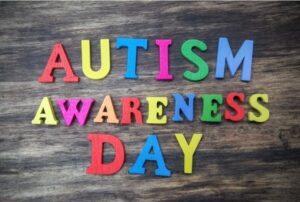As parents, we always want to provide the best environment for our children to grow, and one of the most important aspects of this is helping them manage their emotions. Emotional ups and downs are very common in children, especially when they face challenges, stress, or frustration. But that doesn’t mean we can’t help them deal with these emotional reactions more effectively. Having been a parent for several years, I’ve had my fair share of emotional ups and downs with my kids, and I’ve picked up a few practical tips that really work. Today, I’m going to share five proven methods that can help your child take control of their emotions, so they can approach life’s challenges with more confidence and calmness.
1. Create a Safe Space for Emotional Expression
It's completely normal for children to have emotions, especially when they are still learning to understand their feelings. Sometimes they might feel confused, anxious, or even angry, and our job is to create a safe, non-judgmental space for them to express these emotions. We shouldn’t make them feel that expressing their emotions is unacceptable.
How to do it:
- Spend some time each day talking with your child about their day, asking what made them happy or what made them angry. This encourages open communication and helps them express their feelings.
- When your child experiences a strong emotion, resist the urge to criticize. Instead, give them time to calm down, and once they’ve settled, discuss what happened.
- Provide tools like emotion cards or stickers, so they can show how they’re feeling more clearly. You might be surprised by how well this method works to help kids articulate their emotions.
FAQ:
- How can I help my child express their emotions?
Encourage your child to use emotion cards, stickers, or simple conversations to express how they feel. As a parent, give them full understanding and support without judgment.
2. Teach Kids to Recognize and Name Their Emotions
Children often struggle to accurately describe the emotions they’re experiencing. They might just say they feel “bad” or “angry,” but don’t fully understand what that really means. Helping kids understand and name their emotions is the first step toward them gaining control over their feelings.
How to do it:
- Provide emotion flashcards or picture books that teach kids about different emotions. You can say things like, “Are you feeling angry right now, or maybe a little sad?”
- You can also help kids during everyday conversations. For example, “Why do you feel angry? Is it because your friend took your toy?”
- When your child is upset, try not to rush to correct them. Instead, empathize and acknowledge their feelings first, like “I understand you’re really angry right now, but we need to calm down.”
FAQ:
- How can I help my child identify their emotions?
Use storybooks, emotion cards, and daily conversations to help your child recognize and understand their emotions, ensuring they can express what they are feeling clearly.
3. Deep Breathing: A Quick Way to Calm Down
When kids are upset, deep breathing is a simple but effective tool to help them regain composure. Deep breathing helps children calm down quickly and avoid losing control over their emotions.
How to do it:
- Show your child how to take deep breaths: “Breathe in slowly for three counts, then breathe out.” Do this a few times, and they will start to feel calmer.
- You can also introduce other relaxing activities, such as drawing, listening to music, or playing a calming game, which can help soothe their emotions.
- Taking a walk outdoors or engaging in light physical activities, like cycling or playing ball, can also be great ways to release stress and reset emotionally.
FAQ:
- Does deep breathing help with anxiety?
Yes! Deep breathing is a great way to reduce anxiety. It helps kids relax, regulate their breathing, and alleviate emotional tension.
4. Build Healthy Habits to Stabilize Emotions
Often, a child’s emotional instability is linked to irregular routines. Lack of sleep, poor diet, or insufficient physical activity can all contribute to emotional volatility. Therefore, helping children establish regular routines and healthy habits is crucial to emotional regulation.
How to do it:
- Ensure your child gets enough sleep every night. You can set a fixed bedtime routine to help them develop consistent sleep habits.
- Provide a balanced diet rich in fruits, vegetables, whole grains, and protein, which are known to help with emotional stability. Try to minimize processed foods, sugary snacks, and unhealthy fats.
- Encourage physical activity, such as walking in the park, riding a bike, or playing sports. Physical exercise is a great way to release tension and maintain both physical and mental well-being.
FAQ:
- Do lifestyle habits affect my child’s emotions?
Yes! Lack of sleep, irregular eating patterns, and not enough exercise can make children’s emotions more unstable. Keeping a healthy lifestyle will help their emotions stay balanced.
5. Teach Kids Positive Coping Techniques for Challenges
Emotional regulation isn’t just about calming your child down during emotional outbursts; it’s also about teaching them how to positively handle stress and challenges. When kids learn how to cope with life’s difficulties, they are better equipped to manage their emotions in healthy ways.
How to do it:
- Help your child break down problems. When they face something tough, instead of feeling overwhelmed, they can take small steps to address the issue one step at a time.
- Encourage positive self-talk when facing challenges, “It’s hard right now, but I can figure it out.”
- When your child experiences setbacks, remind them that failure is part of growth, and the important thing is to learn from it and try again.
FAQ:
- How can I help my child cope with setbacks?
Encourage them to view failure as a learning opportunity. Help them practice positive self-talk and guide them through the problem-solving process, which will build their resilience and confidence.
Final Thoughts
Managing emotions is a long-term process that requires patience and support from us as parents. By creating a safe space for emotional expression, helping children recognize and name their feelings, teaching deep breathing techniques, promoting healthy habits, and guiding them through challenges with positive coping strategies, we can empower our children to manage their emotions more effectively. This will help them feel more confident and resilient as they grow, and face life’s ups and downs with a healthy mindset.
Emotional struggles are a part of growing up, but as parents, we can help our children build strong emotional regulation skills, allowing them to become happier and more balanced individuals.
Frequently Asked Questions (FAQ)
1. What should I do if my child is constantly feeling anxious?
Help your child identify the source of their anxiety, and use deep breathing techniques or relaxing activities to calm them down. Also, maintaining a regular sleep and activity schedule can help.
2. How should I respond if my child gets angry?
Avoid arguing with them. Instead, give them some space to calm down, then discuss the situation later when they’re more settled. Deep breathing and other relaxation activities can help.
3. How can I encourage my child to express their emotions?
Encourage your child to use emotion cards, stickers, or talk openly with you about their feelings. Lead by example, showing them how to express emotions in a healthy way.
References:
- American Academy of Pediatrics. "Managing Children's Emotions." HealthyChildren.org.
- Centers for Disease Control and Prevention (CDC). "Helping Children Cope with Stress." CDC.gov.
- National Institute of Mental Health. "Children and Mental Health." NIMH.gov.
- Child Mind Institute. "Helping Kids Manage Stress." ChildMind.org.













